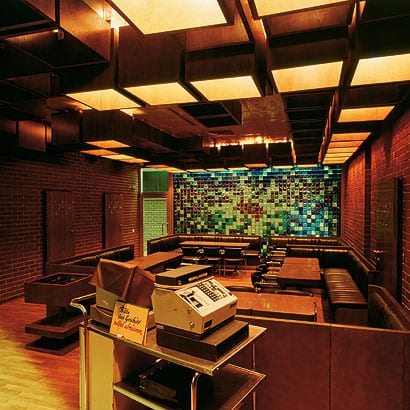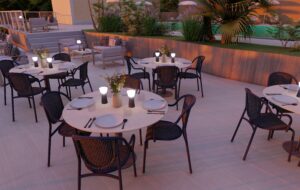|
The Palast as it appeared in 1993, when these photos were taken. It had been empty for three years |
||
|
The controversial demolition of the East German parliament is now complete. Photographer Thorsten Klapsch unearthed his pictures of it from the early 1990s, soon after it was abandoned, while Jana Scholze remembers it both as a place and a symbol. 1988. Early memories in a confined country: I am entering a huge modern building with vast, open spaces. The brown thermo glass and brass framed windows provide the typical 1970s feeling. A large staircase and numerous escalators (16 in total) connect the five levels that are somehow visible from the ground floor. The building does not seem to hide anything; the glazed facade suggests transparency. The ceiling with its 1001 ball lights is an icon rather than a provider of light. Inside, no restriction, full accessibility, a wealth of options in art, culture, entertainment and politics. This openness, abundance and freedom of choice were not just unusual for the Deutsche Demokratische Republik (DDR), the former East Germany – it was the opposite of daily routines in a country obsessed with control, restriction and order. The “Palace of the Republic” was somehow the anti-symbol of the socialist reality while at the same time representing the ideals and visions of its people. The modernist glass and steel box by architect Heinz Graffunder seemed to represent a young country confidently looking into its future. True to its name, it was a house for the people. Its open doors and easy accessibility signified the intended audience: everyone, the whole republic. It was a place to go, to meet, to spend time. Not surprisingly, many visitors to the Palast seemed unaware of its main function: it was the seat of the DDR’s parliament. 2009. The Palast is gone, destroyed after a long process of neglect, endless discussion and finally rejection. With the fall of the Berlin Wall in 1989, socialist architecture – especially with such a representative character – fell out of favour, and the decline of the Palast began. It was too symbolic to be simply demolished, an act that would have caused an outcry and left a huge scar in the middle of Berlin. The building and its prominent neighbours – Berlin’s cathedral and opera house, Humboldt University and Museum Island – were the subject of a huge debate in city and capital planning. Two points are characteristic of this and similar debates in Berlin: an understanding of all socialist architecture as ferocious and inhuman, and a total disregard for contemporary architectural solutions. The discussions about the future of the Palast turned right away into a debate about the reconstruction of the widely unknown Berlin Stadtschloss, the city castle, which occupied the same site until shortly after the Second World War. This plan was strongly promoted by an organisation called Supporters of the Berlin Castle (led by a Hamburg businessman, Wilhelm von Boddien) which seemed to have the tacit support of the German government. The reconstruction of the castle also had prominent support from powerful people both inside Germany and abroad, among them George Bush senior and Henry Kissinger. The idea of reconstructing historic buildings is not new to Berlin (and Germany) – in close vicinity to the Palast are probably the most famous post-1989 examples, Karl Friedrich Schinkel’s Building Academy and Johann Gregor Memhardt’s Old Command Headquarters. Those buildings and the entire “Schlossplatzdebatte” around the castle show a desire to erase the visible history of a divided Germany and create a new sense of belonging by reconstructing pre-war, representative buildings.
The espressobar When the German government was looking for a way to quietly demolish the Palast without political opposition and public outcry, the building seemed to provide the solution itself. In the early 1990s asbestos was discovered in the structure and the slow process of dismantling began. The Palast wasn’t fully demolished until December 2008. The reconstruction of the castle is scheduled to be finished in 2014 at an estimated total cost of around €500 million. Behind a reconstructed castle facade the so-called “Humboldt Forum” will become home to various educational, scientific and cultural facilities. The dismantling of the Palast writes another sad chapter in Berlin’s battle to win back a lost history by opposing modern and contemporary architecture. First and foremost, this is an ideological, political battle for and against certain histories symbolised in built form.
Theatre Bar
Speaker’s podium in the parliament chamber
Boardroom
Office of the president of the Volkskammer, the DDR’s parliament
An office with some of the globe lighting that was characteristic of the building |
Words Jana Scholze |
|
|
||
|
The great hall |
||



























